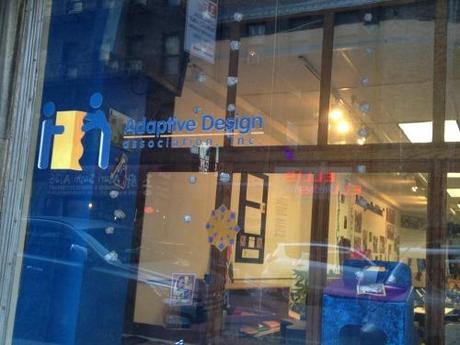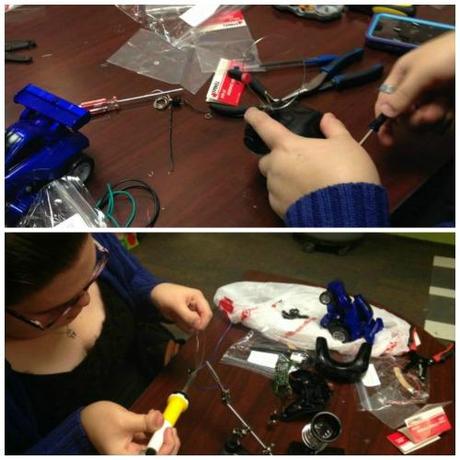First visit? Glad you're here! I hope you'll take a second to stop by my Facebook page and subscribe for updates so we can stay connected!
 Follow
Follow
Anyone with a disability can tell you the world wasn’t made with us in mind. Rarely are mainstream products designed with a focus on accessibility. The Adaptive Design Association, also known as DIYAbility, is an organization whose mission is to change this reality by putting the power of adaptation in reach of the disability community. Started by John Schimmel and Holly Cohen, both professionals with vast experience in using and developing adaptive technology, DIYAbility is proof positive that all it takes is a little ingenuity and teamwork to improve accessibility of things we all use in our daily lives.
How? The process is known simply as “making,” and it’s not limited to adapting items. Makers are people with a passion for tinkering, creating, and inventing things, often to fulfill needs not already met by existing items. DIYAbility, a Makerspace in New York City, came to be as John and Holly realized that members of the disability community often required adaptive equipment or highly specific adaptations that come at incredibly high costs. Making can serve as a solution to avoid grappling with prohibitive expenses, while also getting in touch with your inner MacGyver. As John explains, “By educating members of the community in how to create their own modifications, it is not only enabling increased independence, but also empowering them to come up with their own devices and modifications to meet their specialized need.”

I had the chance to experience DIYAbility’s philosophy in person, trying my hand at adapting a remote control car at a workshop they hosted called “Toy Hacking for the Holidays.” Hacking goes right along with making, as it involves taking an already existing item and modifying it to be more functional. During the workshop, I learned how to alter the inner workings of the remote control car to allow it to be more accessible for people whose physical disabilities make it challenging to use a typical joystick.
Now, I’m not exactly skilled in the art of deconstructing electronics or wielding a burning hot soldering iron, but John and Holly were there to help, demonstrate, and explain every step of the way. I had to take apart the remote control and rewire it to create two jacks (like the things you plug your headphones into) so that I could plug in a big button which could be used instead of the joysticks to operate the toy car. (I know, I’m awesome at writing technical descriptions.) For kids with difficulties with dexterity or limb function, this would make it easier to play with the car.
People brought tons of cool things to adapt during the workshop, like a dancing zebra stuffed animal and a toy kitchen mixer. It’s pretty impressive how all it took was a few hours to change the inner workings of a whole bunch of different battery-operated toys. And while I was just having fun and learning something new, DIYAbility is actually accredited as a continuing education activities for The American Occupational Therapy Association. Total win-win for everyone.

One of the occupational therapists I collaborated with was a lovely woman named Aarty. You can see us in the video below with our hands wrapped in aluminum foil, making a high-five motion that causes my car to move. Basically, the foil conducts electricity and can be used as to create a makeshift button if you don’t actually have an adaptive button to plug into a toy. Plus, this video is proof that even after all of my messing around with the remote control, I actually got the car to work! At the end, a lot of the working toys were donated to therapy facilities. I have to admit though, I kept my little car so I can look at it as a reminder of what’s possible.
I left the DIYAbility workshop feeling energized and empowered, and wanting to talk about it to anyone who would listen. I’ve barely scratched the surface of what there is to learn, but what I know for sure is that there are endless possibilities for the ways in which the things we need and use every day can be made accessible. Creativity and collaboration are the keys to adapting the world around us.

